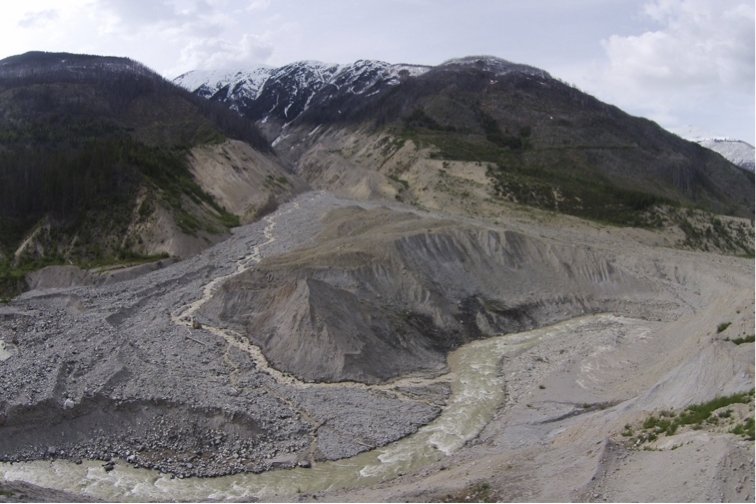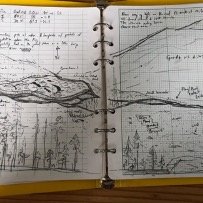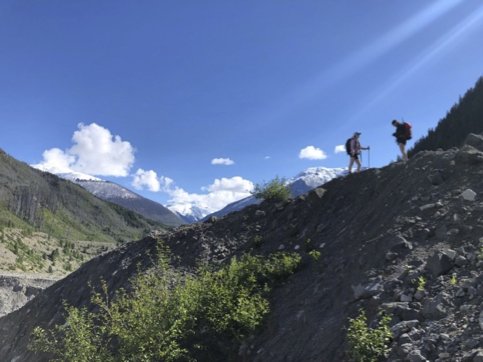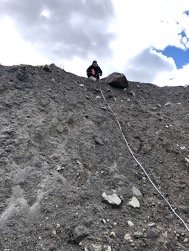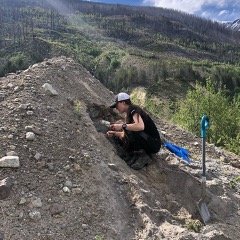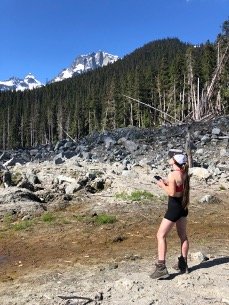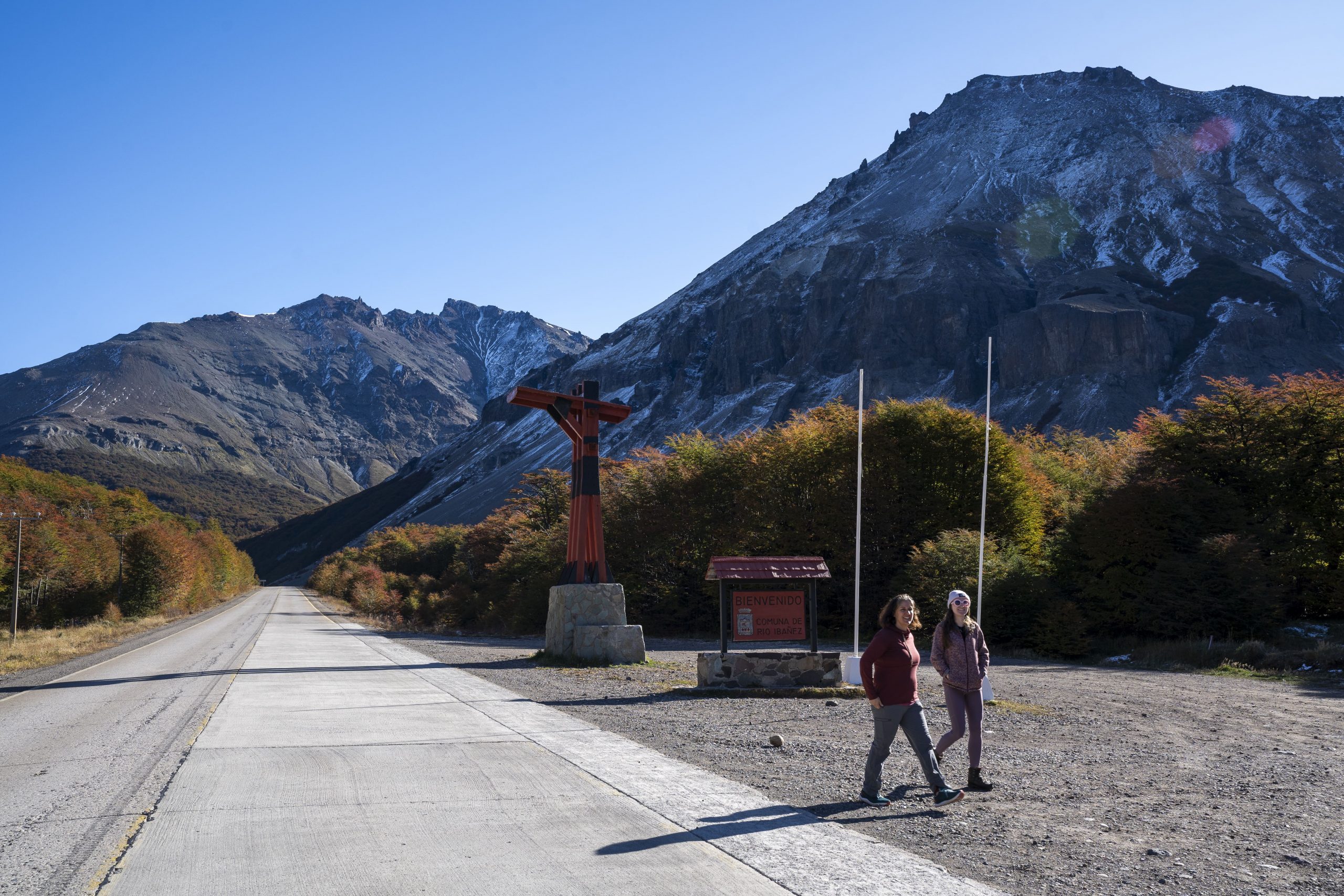
For the month of April, Michele and I embarked on an unforgettable journey across Chile, travelling from Santiago to Villa O’Higgins along the winding mountain highway of the iconic Carretera Austral. Our goal was simple, to share the outputs of my PhD project which sought to understand the Controls on the dynamics of Catastrophic Mass Movements in High Mountain Regions. I had spent four years researching how Villa Santa Lucia and Villa O’Higgins were being affected by climate change, deglaciation, and catastrophic mass movements. We wanted to meet with communities who are being affected by these complex landscape dynamics and establish relationships for future collaboration surrounding holistic hazard management in remote mountain settlements. Nestled between towering mountains and glacial rivers, Villa O’Higgins became our home base for an intensive field expedition across the Mosco watershed.
During the first two years of my PhD, I had researched the impact of climate change on the Mosco glacier range and had planned four field visits to characterise the role of deglaciation in increasing the frequency of CMM, and to determine the stability of two new glacier lakes which had formed in the paraglacial landscape. These four trips were ultimately cancelled due to Covid-19, and so the opportunity to finally visit O’Higgins was a long-awaited and emotional way to end my PhD journey.

Over the course of my PhD, I had been in contact with Martin, a local community member who manages the Mosco Hostel. Martin has lived in O’Higgins for seven years, observing the changes in the landscape caused by flooding and deglaciation, and had twice before visited the Mosco glaciers. Generous with his knowledge and expertise, we spent the first evening in Villa O’Higgins planning the route to the Mosco glacier lakes. We learned that we had to navigate through a treacherous canyon which could be impassable due to the rapidly flowing and endlessly evolving Mosco River. The constant threat of landslides and debris flows from the surrounding mountains would also cast a shadow over our trek.

Setting out the next day, we hiked 10km of winding forest and set up camp at a refugio (shephards hut) around 5km from the lakes. Ditching our heavy packs, we went to scout the Mosco River and planned our route for crossing the sinuous channels leading up to the canyon. We camped out at the refugio, and early the following day, we began our journey to the lakes. Early mornings provide cooler temperatures, which in theory meant lower glacial melt and lower discharge in the Mosco River. In a perfect world, it would be flowing underground, making the canyon more easily accessible. This was not the case.
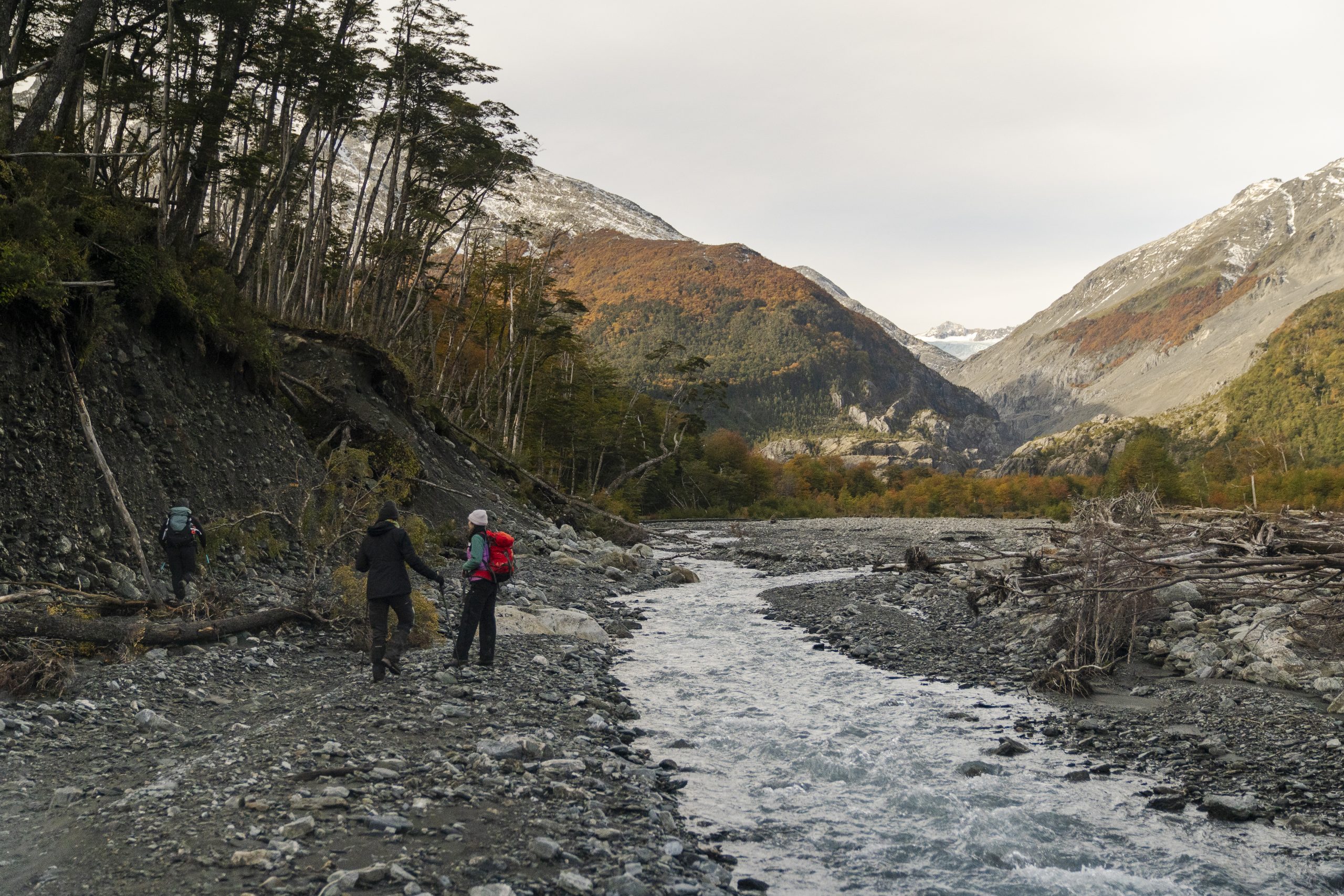
Mosco was flowing rapidly, but we crossed twice with relative ease. Moving rapidly across the alluvial fan, created by frequent landslides and debris flows running down from the surrounding mountains, we checked the first two trail cameras which had been installed by my PhD supervisor Professor Andy Russell and Dr Alejandro Dussaillant in 2021. To our surprise, these cameras were both operational, and provided two years of time lapse imagery of the landslide which created the first glacier lake. The trail cameras also yielded enormous spiders hiding in the cases secured to trees, and terror in me.
Continuing towards the lakes, we encountered fresh debris flow tracks which were likely triggered by recent rainfall. Another reminder of the dynamic landscape we were passing through, and a reminder to be vigilant about safety. We arrived at the mouth of the lake, and walked single file around its border. With every step, scree slipped and shifted beneath us, falling into the lake. As I walked forwards, I hoped that the large boulders balanced on the scree above us wouldn’t fall. They didn’t; we arrived safely on the side of the lake and began our work. Michele deployed hobo loggers, which would monitor the glacier lake level and temperature for the next 12 months. I flew the UAV, imaging the glaciers, lakes, mountain sides, and the headscarps of generations of slope failures. I would create 3D renderings of the area, using Agisoft photogrammetry software to build digital elevation models (DEM) based on the image X,Y, and Z coordinates. This DEM would be used in scenario modelling of potential inundation extents of CMM and flood events, and will also be used to quantify the changes in glacier volume, extent, as well as the size and volume of future CMM occurring across the Mosco watershed.
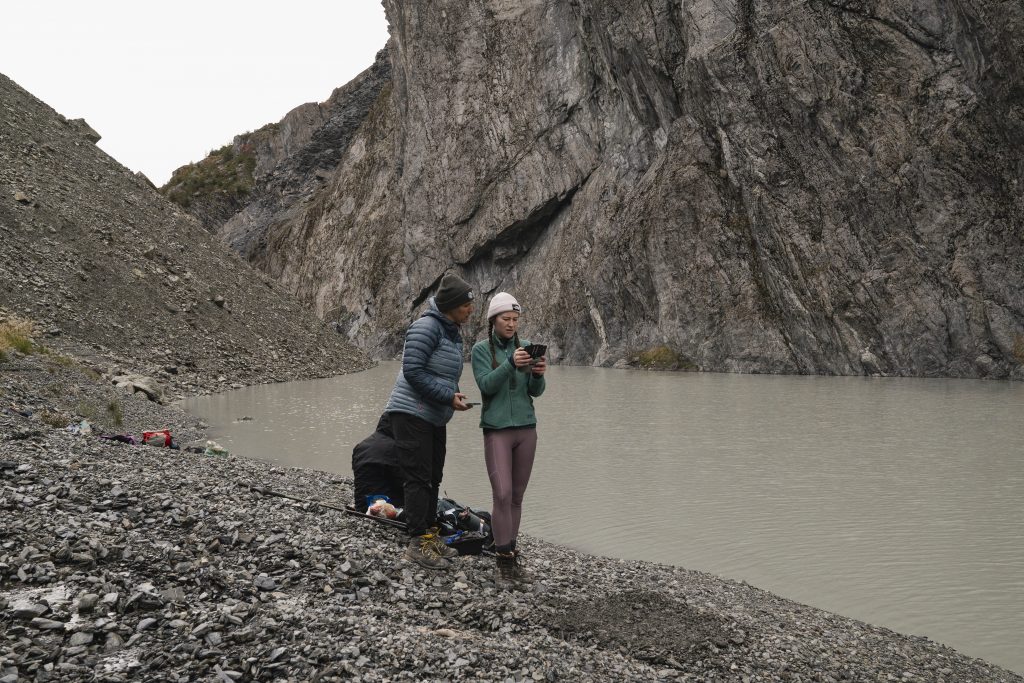
After we finished installing our monitoring equipment and surveying the glaciers, lakes and landslide deposits, we retraced our steps and left the treacherous canyon, reaching the alluvial fan and completed another UAV survey of the unstable mountain slopes surrounding the fan. Michele gathered sound recordings of the glacier streams and the sediments moving within the streams, and I took some time to speak to our guide Martin about the changes he observed in the valley since his last visit to the glacier in 2019. Tired but invigorated by the success of the day, we trekked back to Villa O’Higgins.
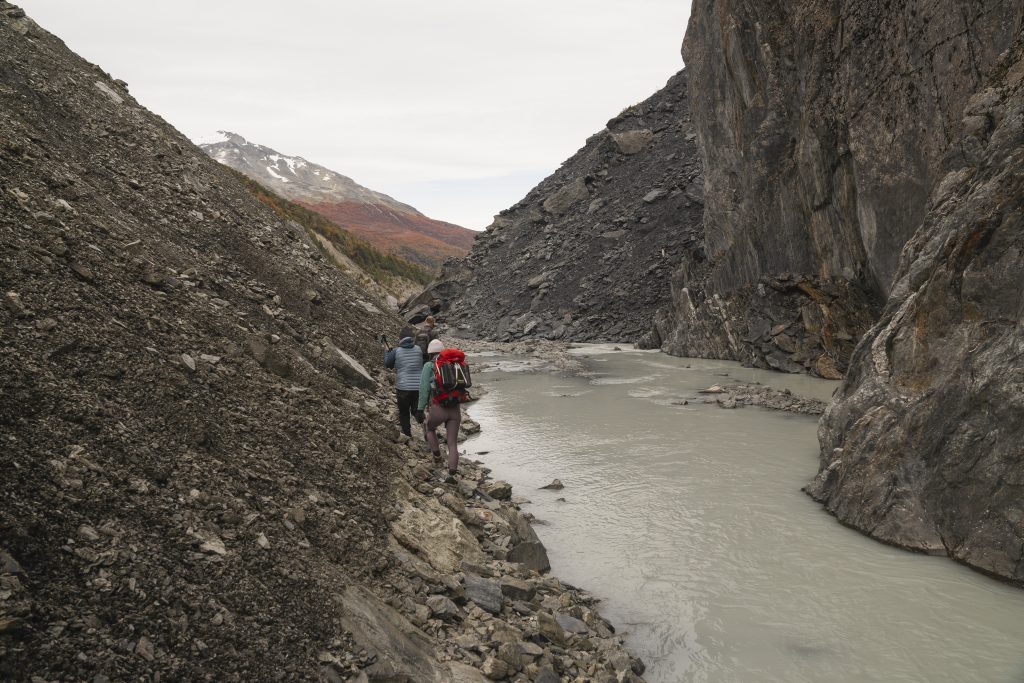
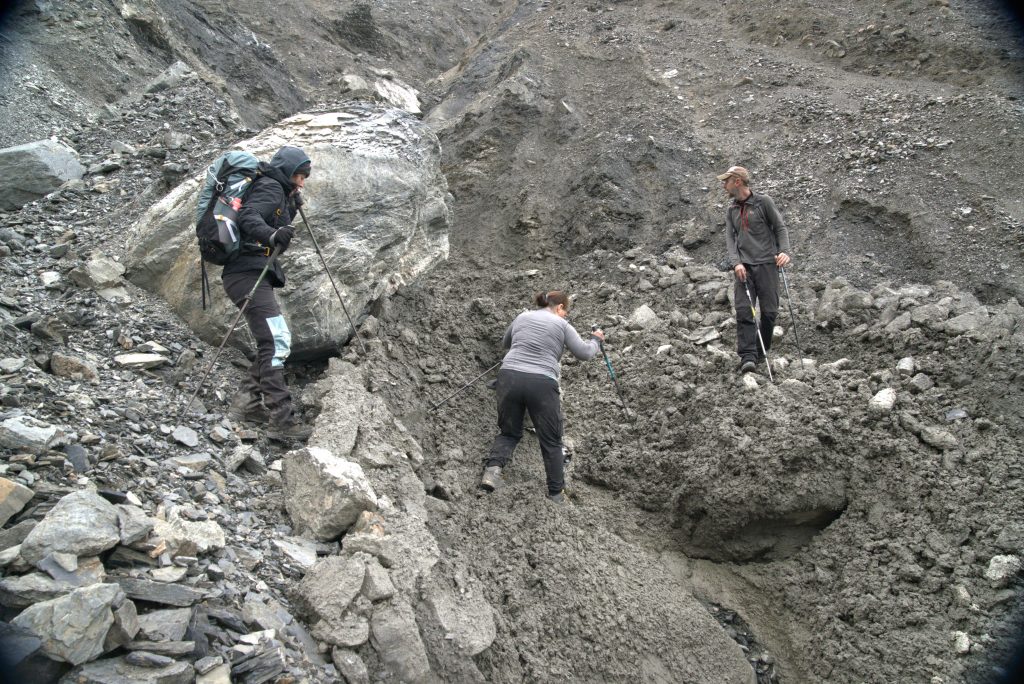
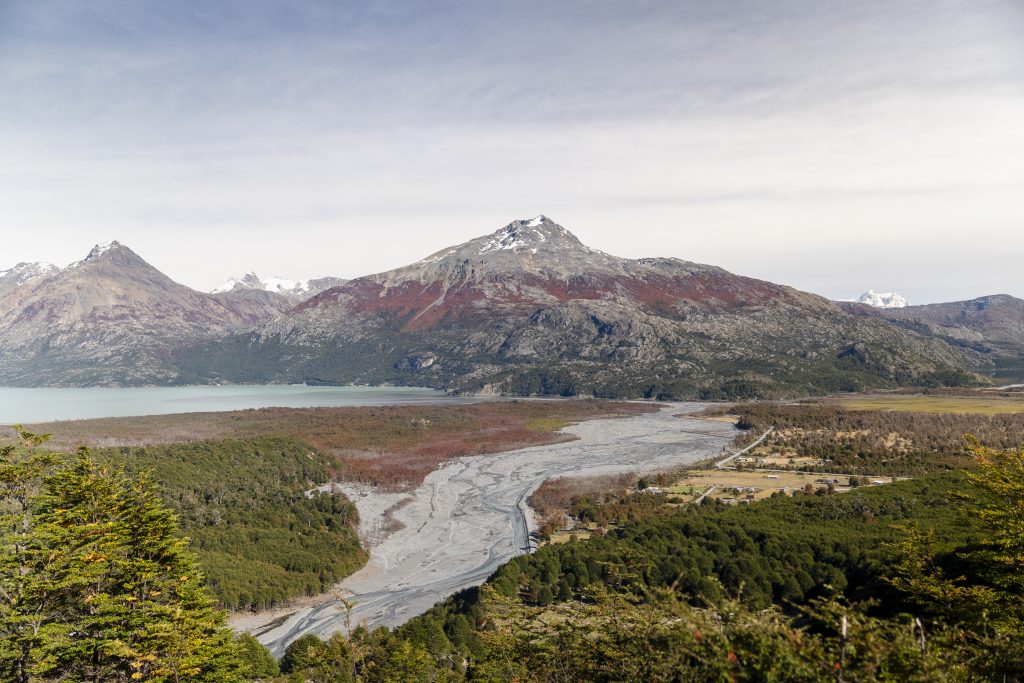
The following days in Villa O’Higgins were spent interviewing community members; three people generously gave us their time to share stories of landscape change over the course of their lives. Andrea and I delivered a presentation about my work to 30 community members, where we spoke about the changes in the glaciers, landslide histories, and future potential hazards which may impact the community. During a lively Question and Answer session, we learned about the concerns of flooding and future landslides which could impact people, houses, and future infrastructure development. We came to understand that the community concerned about the efficacy of new flood defenses which border the Mosco river. These flood walls were built by the municipality in response to an atmospheric river induced flooding event in 2019, which destroyed bridges, inundated homes, and caused two community members to permanently relocate to the other side of the river. We were encouraged that all attendees of the event thought more monitoring and research around the Mosco watershed is needed, that they want to be involved in the management of the watershed, being supportive of co-developing hazard management strategies during future visits. The community also expressed that scenario-based modelling of future flood and mass movement inundation is a priority for them, and they would welcome our support in generating this information.
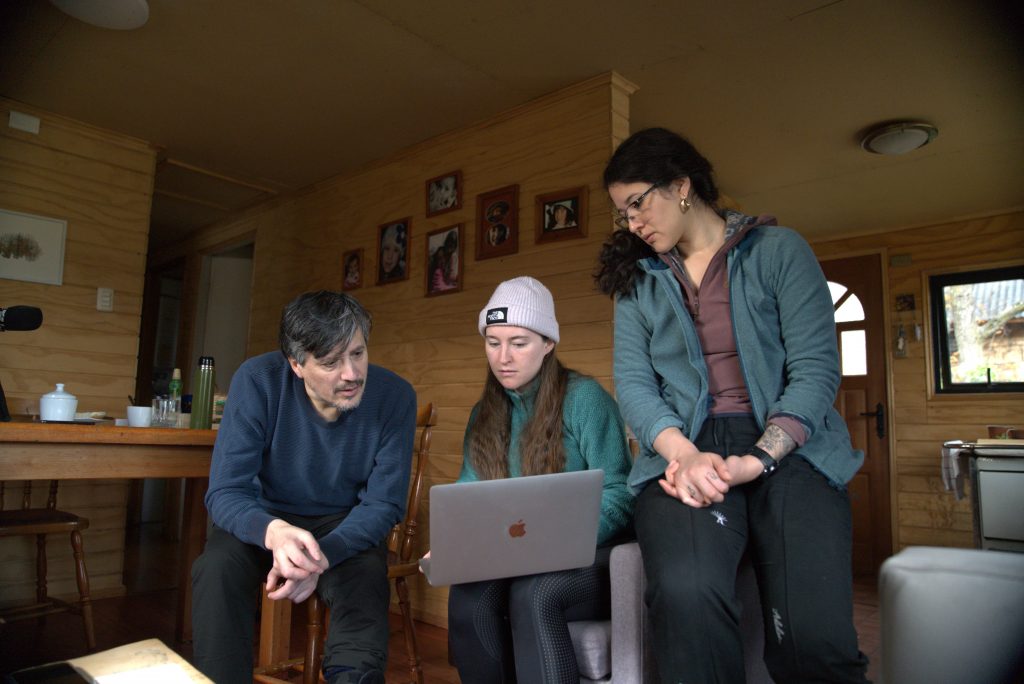

We left Villa O’Higgins after six days of learning, observing, and acquiring data. Ready for the next part of our journey, we returned to the Carretera, heading North to Villa Santa Lucia.
